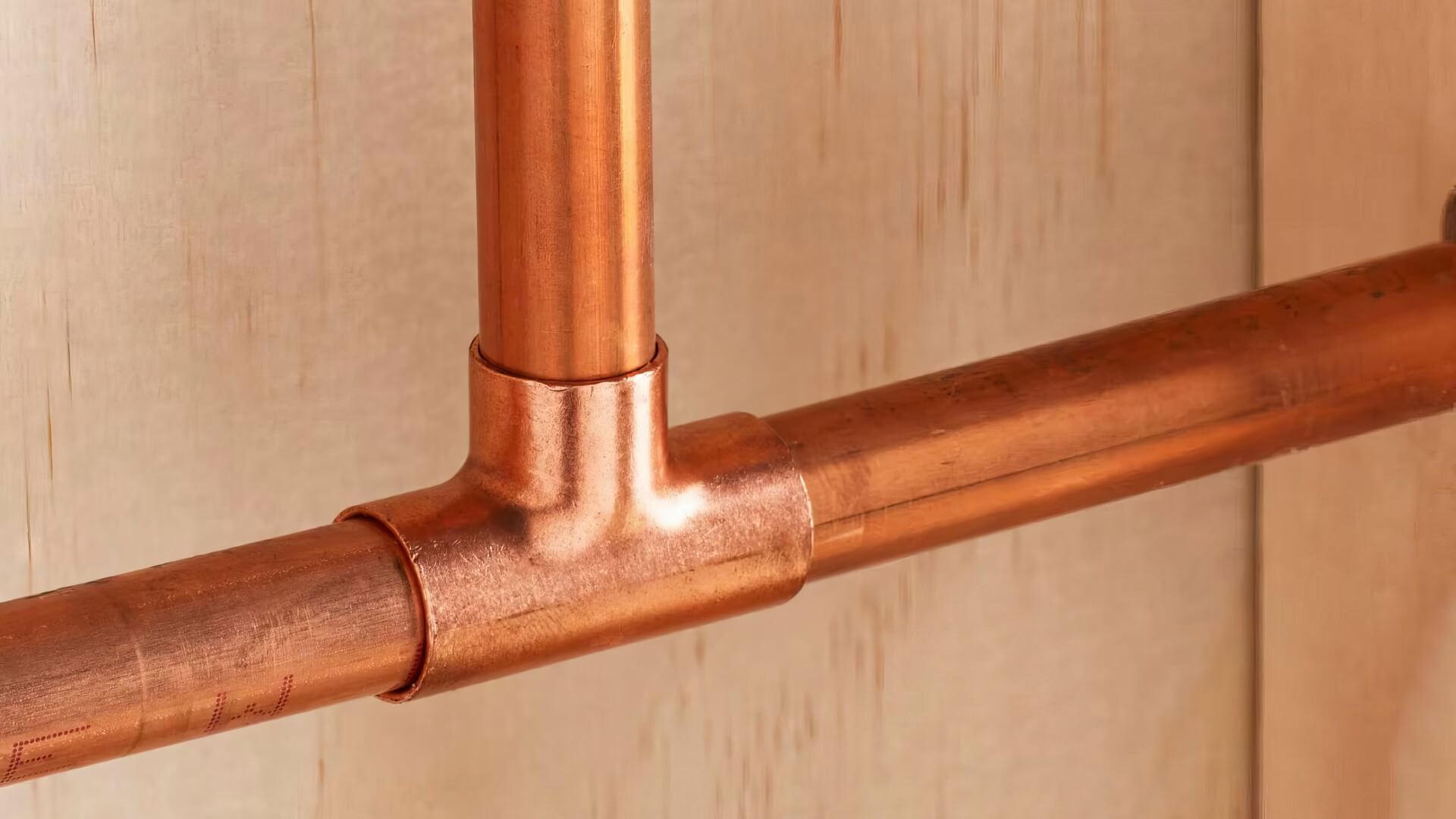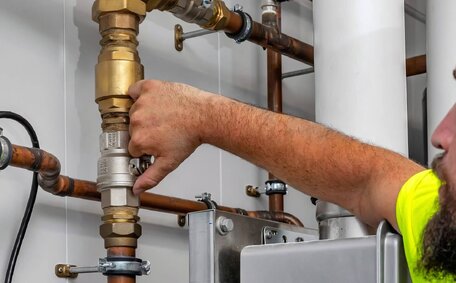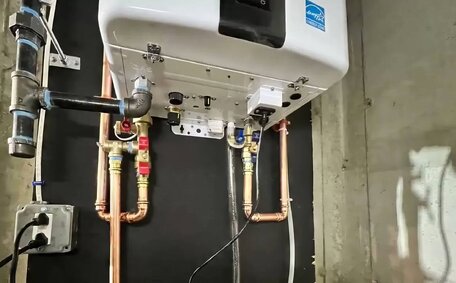Selecting a Safe Storage Location for Gas Cylinders
Choose a storage area with consideration to the distance from combustible materials and potential ignition sources. Maintain at least 6 metres of clearance between cylinders containing compressed gas such as propane and potential combustion sources for optimal safety.
To ensure safe gas cylinder storage, the area should be well-ventilated, especially when its location is outdoors or in an open garage. If storing cylinders indoors, select a ground-level room with direct exterior access and avoid below-ground level spaces like basements.
Secure arrangements are essential in a gas cylinder storage facility to prevent tanks from tipping and ensure they remain in an upright position. Sturdy brackets, chains, or a purpose-built gas bottle cage can properly secure cylinders.
Outdoor Storage Considerations
When storing gas cylinders outdoors, you should place them in locations that protect them from weather extremes that could compromise safety, ensuring cylinder valves are closed when not in use. Even in open-air environments, shield cylinders from direct sunlight to prevent internal pressure increases due to excessive heat.
Keep temperatures in the gas cylinder storage area within the safe range of -20°C to 45°C at all times. Make sure to utilise shade, insulation or reflective materials if needed.
Implement measures to securely store compressed gas cylinders, safeguarding them against unauthorised access and risks like high vehicle traffic. Sturdy stands, racks or cages can properly protect and separate toxic corrosive and flammable gas types from other substances. Maintaining proper separation distances, oxygen and other gases stored must be kept at least 6 metres from flammable gases like propane or acetylene as per Australian Standard AS 4332.
Ensure good drainage and ventilation in outdoor cylinder areas to prevent waterlogging and the build-up of leaked gases, as gas is heavier than air. Position cylinder valves to face away from any building openings. Post signage where essential instructions should displayed clearly, indicating flammable gas storage along with relevant emergency contact information.
Indoor Storage Considerations
Storage gas cylinders can be a precise operation; when kept indoors, it’s vital to ensure temperature control and proper ventilation are in place. Ensure cylinder storage areas do not exceed 51.7°C to prevent hazardous pressure build-up. Ensure adequate airflow to prevent accumulation of leaked gasses, which is crucial for maintaining the safety of gas cylinders your premises may have.
Choose a ground-level room with an exterior exit for swift emergency access and to facilitate ventilation for all gas storage. Install a gas detection system with an alarm in the gas cylinder storage area for increased safety. Protection should provided, ensuring sufficient fire resistance between the gas cylinder storage area and the rest of the building.
Always keep cylinders upright, using brackets, chains, or cages to prevent tipping, ensuring correct and safe storage. Segregate fuel gas cylinders from oxygen, keeping cylinders at least 6 metres apart as per AS 4332. Decide and check out what should be the limit for storage quantities based on room size, as outlined in our related article on allowable limits.
Post highly visible signage on the gas cylinder store entrance indicating flammable gas storage and emergency contact details, and you must also restrict access to authorised personnel only. Refer to our comprehensive checklist for ensuring the safe handling and storage of flammable gas cylinders indoors.
Properly Securing Cylinders
Always store filled gas cylinders upright and ensure they are well-secured to prevent accidents, including potential tip-overs. Use stable floor brackets, chains, or purpose-built enclosures to ensure secure storage of cylinders. Cylinders should be securely positioned at least 2/3rds up their height to prevent being knocked over if bumped, thus ensuring their centre of gravity remains stable.
Use proper equipment to tightly secure gas cylinders during transit, ensuring vehicle cargo areas are open for ventilation. Position cylinders in open-air cargo areas to enable valve access, and never secure caps or plugs in place when storing or transporting compressed gases. Follow proper code practice guidelines to secure valve protection caps and keep cylinders within open areas of vehicles when not in active use.
Segregate and secure incompatible gas types, for instance, flammable lpg cylinders and oxidising gases like oxygen or chlorine. Position cylinders so that their hazardous content labels should be clearly displayed. Secure cylinders in locations not vulnerable to vehicle impacts, leaks from other containers, rain or snow buildup or excessive heat exposure.
Using Straps and Chains
When handling storing gas cylinders, it is essential to use straps or chains designed for safely restraining pressurised containers. Any straps, chains, slings or cradles used to secure dangerous goods should comply with relevant Australian Standards for load capacity.
Secure cylinders safely around their top third using appropriate devices. Improper securing of gas cylinders can cause them to tip over, potentially leading to a dangerous leak. Tighten chains or ratchet straps adequately to remove all slack but not so tight as to damage or distort the cylinder.
Check that valve caps and protection rings are correctly fitted before securing cylinders for transport. Ensure gas cylinders storage practices include separation according to the minimum distances stipulated for their hazardous contents. Position secured gas cylinders gas labels clearly displayed.
Regularly inspect and replace retaining straps and chains for wear or damage, especially in vehicle cargo areas. Avoid using makeshift materials such as rope or wire in place of purpose-designed tools to secure gas cylinders. Use purpose-designed gas cylinder stores or stands to ensure cylinders remain stable when not in use.
Maintaining Upright Position
To optimise health and safety, always keep gas cylinders upright and vertical during storage or transport in open-air areas. Tipping sideways or upside down can cause lethal accidents.
Gases under specialised management like acetylene require maintenance of flow orientation for proper functionality. Acetylene cylinders contain porous materials and liquid acetone that can mix with the gas if tipped, causing explosions.
All cylinders are equipped with pressure relief valves designed to vent from the top. A gas leak can ignite if released horizontally instead of dissipating safely upwards. Valves and fittings are also aligned for vertical positioning.
Securing your gas cylinder upright prevents accidental tipping and keeps it stable. Use floor brackets, chains, straps or purpose-built cages rated to safely restrain upright gas cylinder positioning.
Regularly inspect storage areas and transport vehicles to ensure gas cylinders remain properly upright. Immediately address any tipping hazards or instability issues.
Safe Handling Practices
Proper training in handling gas cylinders is crucial - ensure all employees review usage guidelines and procedures for safe manipulation of these containers. When moving cylinders, use carts designed specifically for gas bottle transport and protect valves with covers.
How to handle cylinders? Limit movement to one cylinder at a time. Handle gently, never drag, slide or roll tanks. Before moving cylinders, confirm that access paths are unobstructed.
Conduct regular inspections of cylinders for any signs of damage or leaks. How do you handle compromised cylinders? Immediately secure them outdoors away from ignition sources and contact emergency services. Attach "leaking gas" signage.
Wearing appropriate personal protective equipment, such as safety boots, gloves, and eye protection, is essential when operating gas cylinders. When in use, ensure adequate ventilation for toxic or flammable varieties of gas. Never tamper with safety valves or attempt to refill disposable cylinders.
Transportation Guidelines
For safe gas transport, it is critical to properly secure cylinders, preventing any dangerous movement or tipping. Cylinders should never be left loose but rather always stored upright in vehicles with appropriate straps, chains or cages rated to safely restrain pressurised tanks.
Adhering to guidelines from the gas association and AS 4332, transport gas cylinders in open-air bed trucks or trailers, not in enclosed vehicles. Separate flammable gases like propane from oxidising gases like oxygen by the distance that is safe for wherever cylinders can be placed.
Drivers require training in leak detection, emergency response and safe practises like gentle cylinder handling and parking away from heat/ignition sources. Ensure access to valves is maintained - do not secure caps or plugs when moving containers. Post visible hazard signage on vehicles during cylinder transport.
Connecting and Using Cylinders
When connecting gas cylinders for use, a thorough risk assessment along with proper procedures must be followed to prevent leaks or accidents. Select a suitable regulator and hose for safe gas handling, applying no more pressure than necessary. Ensure the threads match the cylinder valve outlet.
You should also remove valve protection caps and visually inspect fittings for damage. Lubricate threads sparingly with approved gas service grease.
Secure gas bottles upright to a fixed object using approved straps or chains during storage and handling. Before connecting fittings, check to ensure the use gas cylinder and regulator valves are fully closed.
Hand tighten connections until snug - never use wrenches or tools that could over-tighten. Slowly open valves and check for leaks on all connections using approved leak detection fluid.
Watch for bubbles. Tighten fittings as needed but do not over-tighten.
Use cylinders in ventilated areas away from heat or ignition sources. Close all valves and replace caps when equipment is not in use.
Monitor hoses for wear and regularly re-check for leaks. Adhere to the best practices and usage guidelines for the specific gas type.
Inspecting and Maintaining Cylinders
To ensure the safety of stored LPG cylinders, Regular inspection and maintenance are your answers. Perform visual inspections on cylinders before each use to detect damage, corrosion, leaks, or expired test dates. AS 2030.1 outlines specific inspection criteria such as:
- Dents, gouges, bulges, cracks or evidence of extreme heat exposure
- Corrosion especially around welds, seams and neck threads
- Leaks detected around valves, safety devices or cylinder walls
- Expired test and inspection dates stamped on collar
- Illegible decals or missing hazard labels
Immediately remove any cylinders that are fully depleted or show signs of being empty from service. Ensure cylinders are formally inspected and tested at prescribed intervals by qualified personnel as per AS 2030.1 and state regulations.
When handling gases under pressure, such as cylinders for inspection or transport, wear designated PPE and secure tanks upright using approved straps or chains. Ensure valve protection caps are fitted and close all valves when not in use.
Proper storage gas cylinders, along with segregation of fuels and oxidizers, signage, access control and fire prevention systems also help maintain cylinder integrity between inspections. Our related articles cover storage of gas cylinders and recommendations in detail.
Responding to Leaks and Emergencies
Gas leaks present serious risks and require an immediate emergency response. Evacuate all personnel from the area and eliminate potential ignition sources. Avoid operating any electrical devices that could serve as ignition sources near the leak.
Clearly identify leak locations with signage such as "Leaking Gas" and cordon off a 30 metre exclusion zone. Contact emergency services on 000 and provide the location, gas type, leak severity and resources/actions taken thus far. Ensure responders are informed of the hazards before arrival.
Attempt leak containment only if safe to do so, such as closing cylinder valves or plugging small external leaks. Monitor boundaries of the hazard zone for gas migration. Provide information and guidance to emergency crews upon arrival regarding safety procedures and location of cylinders/controls.
For advice handling gas leaks or emergencies, call Epping Plumbing immediately on 1300 349 338. Our licenced technicians can safely respond and resolve dangerous gas cylinder or pipe leaks.






